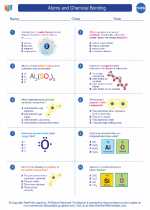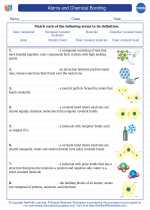Carbon Dioxide
Carbon dioxide (CO2) is a chemical compound composed of two oxygen atoms covalently bonded to a single carbon atom. It is a colorless, odorless gas that is naturally present in the Earth's atmosphere. Carbon dioxide plays a crucial role in the carbon cycle and is involved in various biological and industrial processes.
Properties of Carbon Dioxide
1. Physical State: At room temperature and pressure, carbon dioxide exists as a gas.
2. Solubility: It is soluble in water, forming carbonic acid (H2CO3).
3. Acidity: Carbon dioxide dissolved in water contributes to the acidity of the solution.
4. Chemical Reactivity: It can undergo chemical reactions to form carbonic acid, carbonate ions, and bicarbonate ions.
Sources of Carbon Dioxide
1. Biological Processes: Respiration in animals and plants releases carbon dioxide as a byproduct.
2. Combustion: Burning of fossil fuels and wood releases carbon dioxide into the atmosphere.
3. Industrial Processes: Various industrial activities, such as cement production and manufacturing, emit carbon dioxide.
Role of Carbon Dioxide
1. Photosynthesis: Carbon dioxide is a crucial reactant in the process of photosynthesis, where plants use it to produce glucose and oxygen.
2. Greenhouse Gas: It contributes to the greenhouse effect, trapping heat in the Earth's atmosphere.
3. pH Regulation: Carbon dioxide dissolved in water helps maintain the pH balance in natural water bodies.
Study Guide
When studying carbon dioxide, it's important to focus on its properties, sources, and roles in various processes. Understanding its chemical reactivity and the impact of carbon dioxide emissions on the environment is also crucial. Additionally, exploring the ways in which carbon dioxide is utilized in different industries and the measures taken to mitigate its impact on climate change can provide a comprehensive understanding of the topic.
Key areas to focus on include:
- Chemical structure and properties of carbon dioxide
- Biological and industrial sources of carbon dioxide
- Role of carbon dioxide in the carbon cycle, photosynthesis, and climate regulation
- Environmental impact and measures to reduce carbon dioxide emissions
By grasping these fundamental aspects, students can develop a solid understanding of carbon dioxide and its significance in the natural world and human activities.
.◂Chemistry Worksheets and Study Guides High School. Atoms and Chemical Bonding

 Worksheet/Answer key
Worksheet/Answer key
 Worksheet/Answer key
Worksheet/Answer key
 Vocabulary/Answer key
Vocabulary/Answer key
 Vocabulary/Answer key
Vocabulary/Answer key
